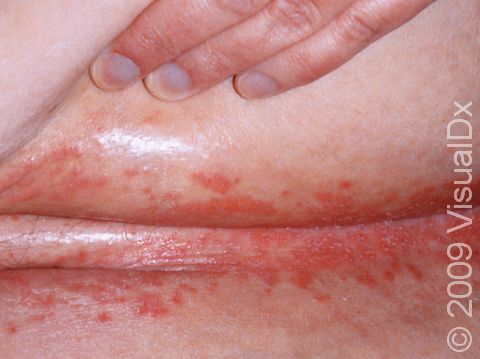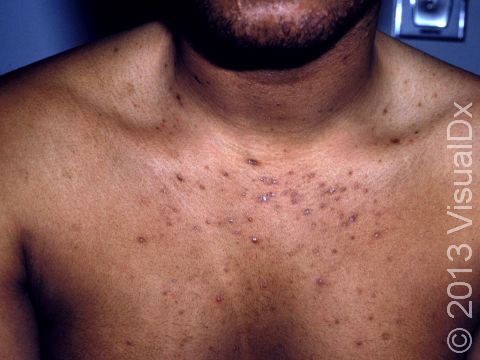Yeast Infection (Candidiasis)
Candidiasis, commonly known as a yeast infection, is an infection with the common yeast (or fungus) organism, Candida albicans, which is commonly found in the environment. Sometimes this yeast lives in the mouth, digestive (gastrointestinal) tract, and the vagina, along with many kinds of harmless bacteria, without causing any issues. However, under certain conditions (particularly weakening of the immune system, the use of antibiotics, exposure to cancer drugs or corticosteroids, or in diabetics), the fungus will multiply and cause disease.
There are different forms of yeast infection, depending upon the area affected. Most commonly, the mouth, vagina, and damper skin areas are affected, as the yeast likes to grow in moist areas.
Most yeast infections are on the surface (superficial) and easily treated; however, serious life-threatening yeast infection can develop throughout the body (systemic) in people with very weak immune systems.
Who's At Risk?
Various species of Candida yeast grow in over half of healthy adults.
- Men and women are affected equally.
- People with weakened (suppressed) immune systems, who use antibiotics, take cancer drugs or corticosteroids, or are diabetic are more likely to develop a yeast infection.
- Older people are more likely to get thrush (oral candidiasis).
- In women, yeast infection is the second most common cause of inflammation of the vagina (vaginitis).
- Long-lasting (persistent) symptoms and yeast infection that does not heal may be the first sign of infection with HIV.
Signs & Symptoms
The appearance and symptoms of yeast infection depend upon the area affected.
The most common types of infection are:
- Thrush (oral yeast infection) – The mouth lining, tongue, and/or angles of the mouth are red, cracked, or have white patches. There may be soreness or no symptoms. This is discussed separately.
- Skin (cutaneous) – Small-to-large patches of red, moist, raw skin usually develop in body creases, such as under the breasts, belly, or groin area. The skin may itch or be painful. Tiny pus-containing lesions (pustules) may appear around the edges of the red areas.
- Vaginitis – Vaginal itch, pain, or burning are frequent and may be accompanied by a cottage-cheese-like discharge. There is usually pain with sexual intercourse.
- Esophagitis – Swallowing may be painful, and there may be pain behind the breastbone.
Self-Care Guidelines
- Most yeast infections can be prevented by keeping body-fold areas clean and dry.
- Diabetics should keep their blood sugar under good control.
- Treat skin infection with a combination of an over-the-counter antifungal cream (such as clotrimazole or miconazole twice daily for 10–14 days) with hydrocortisone cream (0.5–1% applied twice daily after the antifungal cream).
- Lose weight if you are overweight.
- A NON-pregnant women can treat vaginitis with an over-the-counter vaginal suppository or cream antifungals (miconazole or clotrimazole). The woman’s partner does not normally need treatment. Avoid sexual intercourse until the yeast infection heals.
Treatments
Your doctor may prescribe oral antifungal medications for any form of yeast infection that does not improve with self-care measures.
Visit Urgency
See your doctor if your symptoms do not go away with self-care.
Remember that vaginitis can be caused by something other than yeast infection, and you might have a sexually transmitted disease if you are sexually active. See your doctor to confirm the diagnosis.
Trusted Links
References
Bolognia, Jean L., ed. Dermatology, pp.1110-1111, 1185, 1837. New York: Mosby, 2003.
Freedberg, Irwin M., ed. Fitzpatrick’s Dermatology in General Medicine. 6th ed, pp. 2006. New York: McGraw-Hill, 2003.
Last modified on October 5th, 2022 at 8:10 pm

Not sure what to look for?
Try our new Rash and Skin Condition Finder

